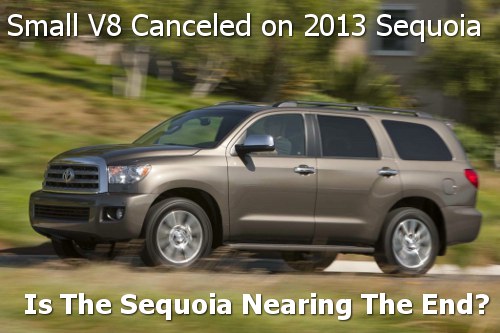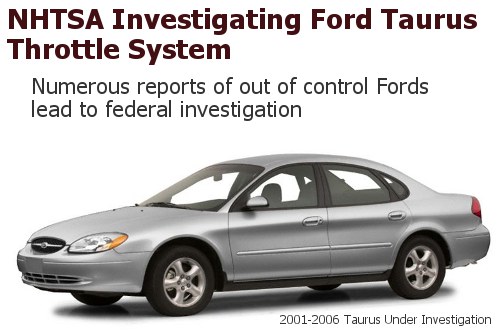
 Author Archive for Jason Lancaster
Author Archive for Jason Lancaster
Jason Lancaster is the editor and founder of TundraHeadquarters.com. He has nearly a decade of experience on the retail side of the auto industry, and another decade of experience of the part and accessory side of the industry.
F150 Finally Manages to Win A “Most America” Truck Award
In 2008, 2009, 2010, and 2011, the Toyota Tundra was recognized by Cars.com as either the most “American” truck on the market or the 2nd most American truck, meaning that the Tundra was built in the USA using the highest percentage of domestic parts compared to any other pickup. Ford, GM, and Ram (aka Chrysler-Fiat) didn’t always have a truck that qualified in these years because at least 30% – and sometimes 50% – of many F-series, Ram, and GM trucks used parts that came from outside the USA.
UPDATE – I over-reached here and made a mistake in the paragraph above (corrections are in green). The F150 was the most American truck in 2008 and 2009, but it fell off the list in 2010 and 2011. The Ram was “most American” in 2010, but that’s a bit of a misnomer, as Cars.com excluded regular cab Ram trucks that year (which are built in Mexico) for reasons that just aren’t logical to me. The Ram never deserved to win this award considering they build trucks in Mexico.
Still, this post is factually mistaken and generally wrong. My apologies.
However, in 2012, Ford won the Cars.com Most American Truck award. For the first time since 2007, the F-150 has 75% domestic content, which is the minimum threshold for consideration. The Tundra (which also has 75% domestic content), is the 2nd most American truck on the market in 2012 because it doesn’t sell as well as the F150.
Considering that Ford is an American company, and considering that every 2012 F150 is assembled in either Dearborn, Michigan or Missouri, it’s about damn time that Ford won this award. The question is, where are GM and Ram?
Why Don’t Diesel Engines Sell in The USA?
Diesel engines are superior to gas engines in a few critical ways:
- Diesel engines are more efficient due to the thermodynamic benefits of their higher compression ratios
- They’re much more durable – diesel engines commonly run 2-3 times longer than a comparable gas engine
- They put out more torque for any given RPM than a similarly sized gas engine, meaning that a tiny little diesel engine can power a small car very efficiently (Ford’s euro-spec Fiesta diesel gets 60+ mpg with a 1.6L motor)
Point #1 and #3 are very important, as they are the main reasons that diesels are so popular around the world. In Europe, for example, about 50% of the vehicles (be they tiny little commuter cars or big trucks) are powered by diesel. Considering that the average cost of fuel in most Western European countries ranges between $6-8 per gallon (1.27-1.72 euros per liter), the fuel economy benefits of diesel engines make them a very popular option.
Yet in the United States, diesel vehicles are barely 5% of the market. Why? What is it about diesels that people in the USA dislike?
The answer? Emissions rules, the “carbon penalty,” and a myriad of other smaller issues keeps diesels from selling. What follows is an attempt to explain – comprehensively – why diesels don’t (and probably won’t ever) sell at any substantial volumes in the USA.
Toyota Drops 4.6L V8 on 2013 Sequoia – Is The End Near?
Rumors that Toyota will cancel the Sequoia have been flying around for a couple of years now, mostly because the Sequoia is a slow seller (Toyota might crack 12k Sequoia sales this year). Selling 12,000 large SUVs isn’t exactly essential to Toyota’s continued success, so the argument goes that canceling the Sequoia would save Toyota some money and allow them to focus on the rest of the line-up.

Toyota Cancels 4.6L V8 Option on 2013 Sequoia
Today, we’ve learned that Toyota will not be offering the 4.6L on the 2013 Sequoia, and this news might seem to add some credence to the rumor that Toyota will be canceling the Sequoia next year. However:
Which is Better – Electronic or Mechanical Throttle Controls? Ford Taurus Throttle Investigation Underway
When the L.A. Slimes inspired panic and distrust of Toyota’s electronic throttle control system back in 2009, many people said that Toyota should stop using all these electronics and just stick with a good old fashioned mechanical throttle. Toyota was being “too fancy” using electronics to control the throttle, and as a result the media (none of whom have ever turned a wrench or written a piece of software) found fault with Toyota’s “overly complicated” system.

NHTSA investigating 1.9 million Ford Taurus models for cruise control throttle cable problems
Of course, the problem with this particular bit of logic is that cables can break too. Just ask Ford about 1.9 million of their Taurus models being investigated by NHTSA.
The “F” in Ford Stands for “Fleet” – Ford Fleet Sales Lead Industry
When Ford and GM owners brag about sales figures to somehow “prove” their trucks are the best available, I say three things:
- Consumers aren’t always rational – They don’t necessarily buy the “best” car or truck on the market. There’s a lot of emotion in car purchases.
- Sales figures are influenced by a variety of factors – From incentives to geography to politics to a consumer’s previous experiences. You can’t study them in a vacuum.
- Fleet sales – Ford and GM roll massive numbers of fleet trucks into their sales figures.
I’m going to focus on #3 right now (you can read more about #1 and #2 here).
The news today is that almost one-third of Ford’s sales are to fleets, which are defined by convention as companies owning at least 15 trucks. Chrysler-Fiat? 30% GM? Just 26%.
Here are fleet sales numbers for the first quarter of 2012, courtesy of Automotive News (subs. req’d):

